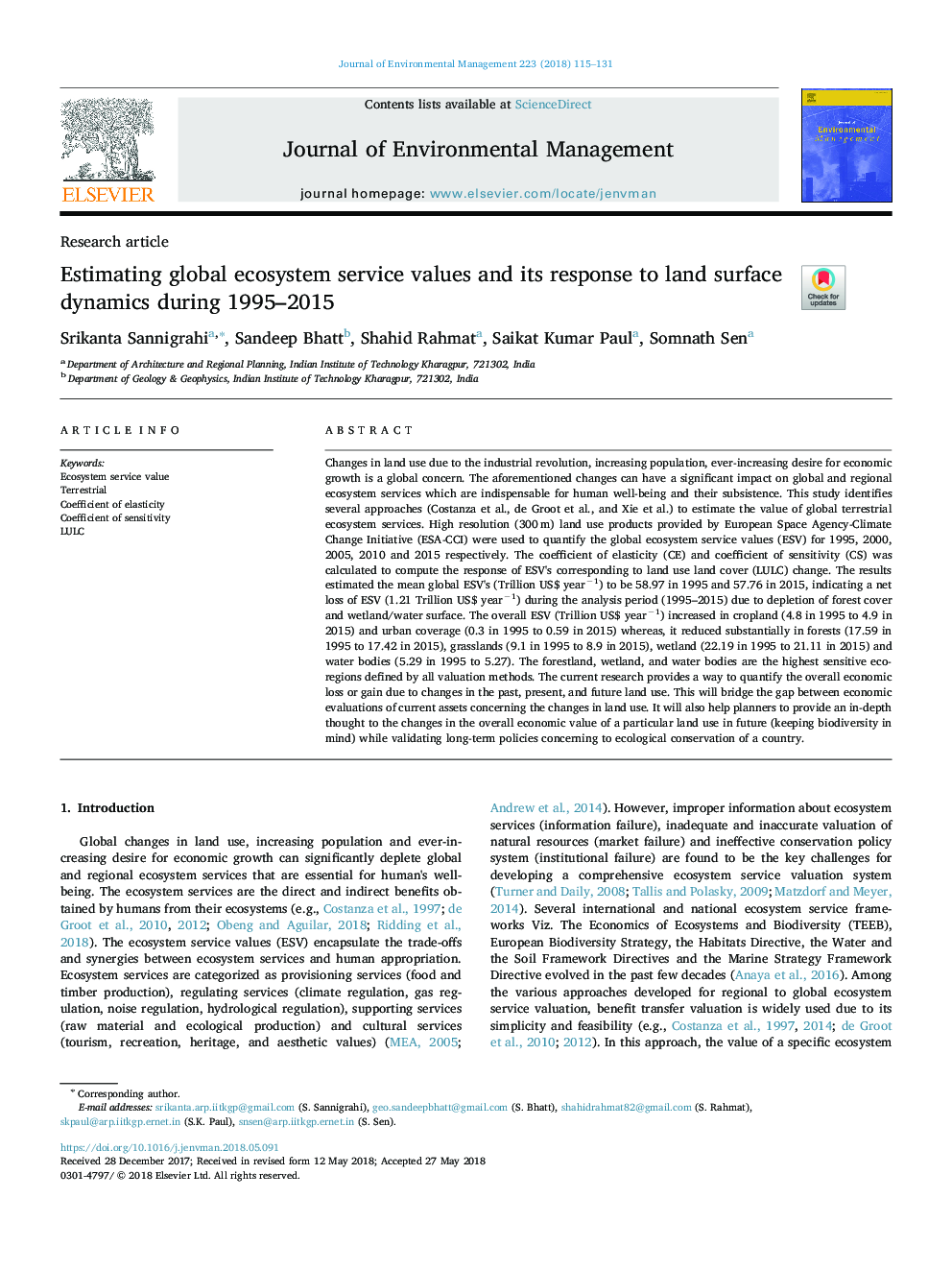| کد مقاله | کد نشریه | سال انتشار | مقاله انگلیسی | نسخه تمام متن |
|---|---|---|---|---|
| 7475785 | 1485195 | 2018 | 17 صفحه PDF | دانلود رایگان |
عنوان انگلیسی مقاله ISI
Estimating global ecosystem service values and its response to land surface dynamics during 1995-2015
ترجمه فارسی عنوان
برآورد ارزش های خدمات اکوسیستم جهانی و پاسخ آن به دینامیک سطح زمین طی سال های 1995-2015
دانلود مقاله + سفارش ترجمه
دانلود مقاله ISI انگلیسی
رایگان برای ایرانیان
موضوعات مرتبط
مهندسی و علوم پایه
مهندسی انرژی
انرژی های تجدید پذیر، توسعه پایدار و محیط زیست
چکیده انگلیسی
Changes in land use due to the industrial revolution, increasing population, ever-increasing desire for economic growth is a global concern. The aforementioned changes can have a significant impact on global and regional ecosystem services which are indispensable for human well-being and their subsistence. This study identifies several approaches (Costanza et al., de Groot et al., and Xie et al.) to estimate the value of global terrestrial ecosystem services. High resolution (300â¯m) land use products provided by European Space Agency-Climate Change Initiative (ESA-CCI) were used to quantify the global ecosystem service values (ESV) for 1995, 2000, 2005, 2010 and 2015 respectively. The coefficient of elasticity (CE) and coefficient of sensitivity (CS) was calculated to compute the response of ESV's corresponding to land use land cover (LULC) change. The results estimated the mean global ESV's (Trillion US$ yearâ1) to be 58.97 in 1995 and 57.76 in 2015, indicating a net loss of ESV (1.21 Trillion US$ yearâ1) during the analysis period (1995-2015) due to depletion of forest cover and wetland/water surface. The overall ESV (Trillion US$ yearâ1) increased in cropland (4.8 in 1995 to 4.9 in 2015) and urban coverage (0.3 in 1995 to 0.59 in 2015) whereas, it reduced substantially in forests (17.59 in 1995 to 17.42 in 2015), grasslands (9.1 in 1995 to 8.9 in 2015), wetland (22.19 in 1995 to 21.11 in 2015) and water bodies (5.29 in 1995 to 5.27). The forestland, wetland, and water bodies are the highest sensitive eco-regions defined by all valuation methods. The current research provides a way to quantify the overall economic loss or gain due to changes in the past, present, and future land use. This will bridge the gap between economic evaluations of current assets concerning the changes in land use. It will also help planners to provide an in-depth thought to the changes in the overall economic value of a particular land use in future (keeping biodiversity in mind) while validating long-term policies concerning to ecological conservation of a country.
ناشر
Database: Elsevier - ScienceDirect (ساینس دایرکت)
Journal: Journal of Environmental Management - Volume 223, 1 October 2018, Pages 115-131
Journal: Journal of Environmental Management - Volume 223, 1 October 2018, Pages 115-131
نویسندگان
Srikanta Sannigrahi, Sandeep Bhatt, Shahid Rahmat, Saikat Kumar Paul, Somnath Sen,
